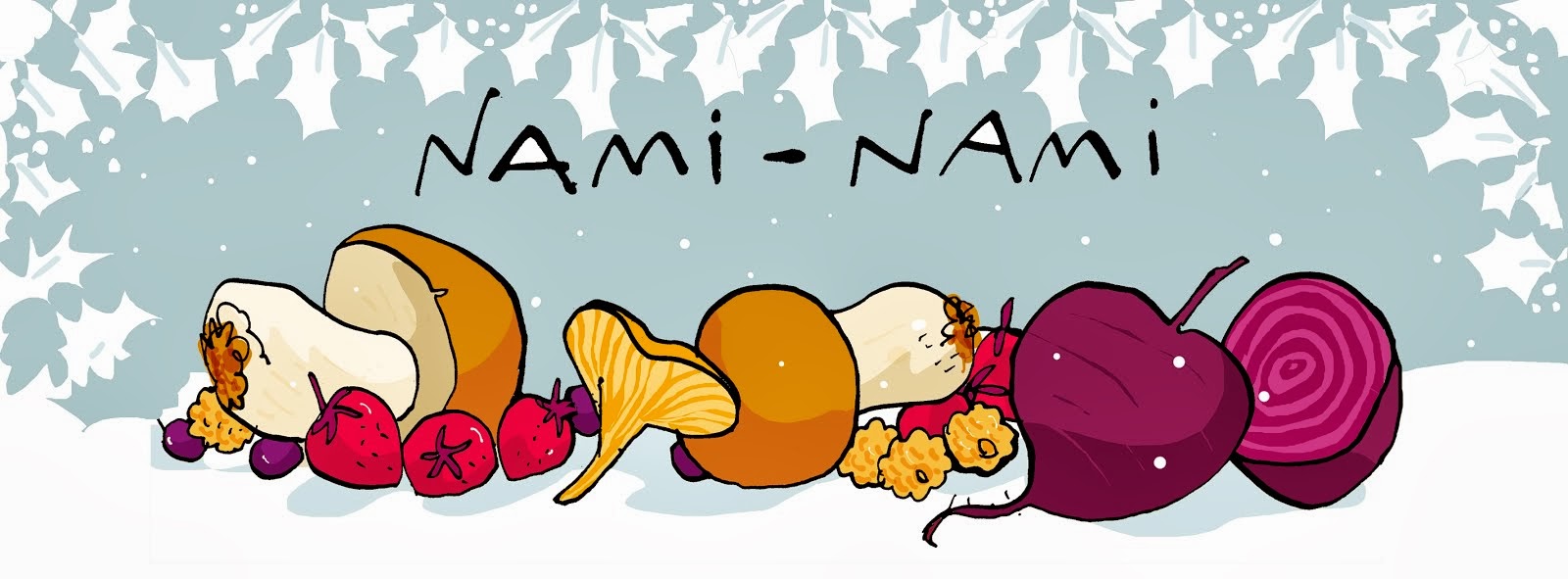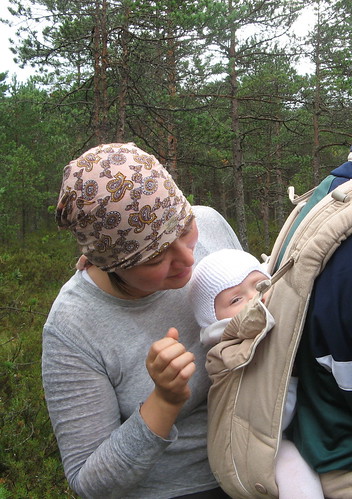
Crab apples (
Malus paradisiaca) are quite popular in Estonian gardens, as they're rather decorative throughout the year - gorgeously pink blossoms during the spring and early summer, attractive tiny red fruits during the autumn (don't you agree?). However, their use is rather limited - they're too tart for eating as a dessert apple, they're a pain to clean for preserving. The traditional way of preserving them is pickled whole in a sweet-and-sour marinade and used as a garnish on various dishes during winter. Not bad, but a bit boring
IMHO.A sweet soul brought me two kilograms (that's just over four pounds) of crab apples the other week, and I wanted to make a jam according to a recipe given to me years ago. I began quartering and coring the tiny apples, and quickly gave up. Way too much hassle, you see. I decided to do something different and a lot easier - a crab apple spread. (You can see the result
here). I fell immediately in love with the colour - and the flavour - of that spread. So when a local newspaper asked me to provide an apple cake recipe for one of their forthcoming issues, I knew I'd be patient enough and quarter and peel those tiny apples anyway.
I quickly sourced another batch of crab apples, and used them in one of my good and trusted apple cake recipes instead of regular apples. I think that simple cake looks simply spectacular because of the crab apples.
Crab apples, by the way, are known as 'paradise apples' in Estonian. So I could call this a
Paradise Cake or
Apple Cake from Paradise:)
Crab Apple CakeServes about 10

The pastry:
200 g unsalted butter
200 g sour cream
350 g all purpose/plain flour
0.5 tsp salt
The filling:
about 400 g crab apples (cleaned weight)
sugar, according to taste (I used 4 Tbsp)
cinnamon
Also:
1 egg white, for brushing
Melt the butter, then mix with sour cream, flour and salt until combined. The dough is very soft at this stage. Cover the bowl with a cling film and place to the fridge to rest for 30 minutes.
Meanwhile, quarter and core the crab apples.
On a lightly floured surface, roll the very nicely malleable dough into a large rectangle (about twice the size of your small to medium sized baking sheet). Carefully lift the dough and transfer half of it onto your baking sheet, leaving the other half to hang over the edge.*
Spread the apples over the pastry, then season with sugar and cinnamon. Fold over the other half of the pastry, and press the edges firmly together.
Brush with a egg white.
Bake in the middle of a pre-heated 200 C/400 F oven for about 35-40 minutes, until the apples are cooked and the cake is lovely golden brown on top.
Remove from the oven and leave to cool a little before cutting into squares.
* You can also simply divide the dough into 2 pieces and roll into 2 rectangles - one for the base and the other for the top. PS You can obviously make this cake with regular apples instead - it'd be just as tasty, if not looking just as spectacular.

















